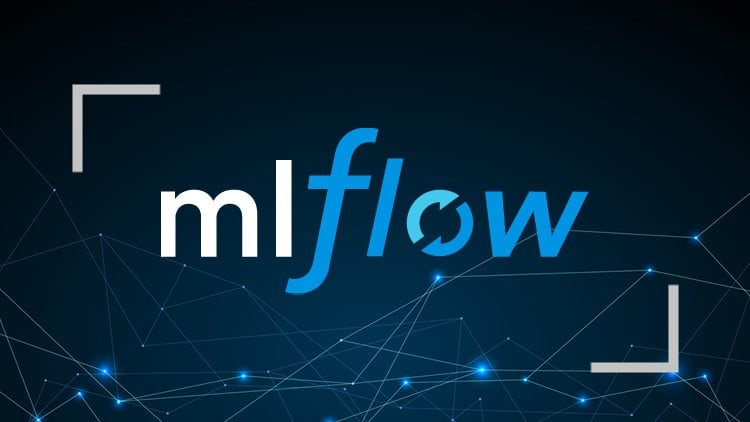
MLflow Security Alert: Mitigating Critical Vulnerabilities in Your MLOps Pipeline
Introduction: The Unseen Risks in MLOps
The world of machine learning is moving at a breakneck pace. Breakthroughs in model architecture and performance dominate headlines, from Google DeepMind News to the latest releases from OpenAI and Mistral AI. In this race for innovation, the operational backbone that supports the ML lifecycle—MLOps—is often treated as a solved problem. However, the tools we rely on to track experiments, package models, and manage deployments are complex software systems with their own potential for vulnerabilities. Recent MLflow News has brought this reality into sharp focus, revealing critical security flaws that could expose entire MLOps pipelines to significant risk, including arbitrary file overwrites and remote code execution.
MLflow, a cornerstone open-source platform for managing the end-to-end machine learning lifecycle, is used by countless organizations to bring order to the chaos of model development. Its widespread adoption makes any security issue a major concern for the community. This article provides a comprehensive technical deep-dive into the nature of these recently disclosed vulnerabilities. We will explore their potential impact, provide practical code examples for identification and mitigation, and discuss the broader best practices necessary to build a robust, security-first MLOps culture. This isn’t just about patching one tool; it’s about fundamentally rethinking how we secure the infrastructure that powers modern AI.
Section 1: Understanding the Core Vulnerabilities in MLflow
To effectively address these security threats, we must first understand their mechanics. The recent vulnerabilities primarily revolve around improper handling of user-supplied paths, leading to two common and dangerous classes of exploits: Path Traversal (leading to Arbitrary File Overwrite) and Local File Inclusion (LFI).
What is Path Traversal?
Path Traversal, also known as “dot-dot-slash” (../), is an attack that tricks an application into accessing files and directories stored outside the intended root directory. In the context of MLflow, an attacker could craft a malicious artifact path during an experiment run. If the MLflow server doesn’t properly sanitize this path, it might interpret sequences like ../../etc/passwd as a legitimate directive to move up the directory tree and access or overwrite a sensitive system file.
Imagine a simplified, vulnerable Python function for saving an artifact. This is not actual MLflow code but illustrates the principle:
import os
# A simplified, VULNERABLE function to demonstrate the flaw
# DO NOT USE THIS CODE IN PRODUCTION
def log_vulnerable_artifact(base_path, artifact_name, data):
"""
This function is vulnerable to path traversal because it directly
concatenates a user-controlled path (artifact_name) with a base path.
"""
# An attacker could provide an artifact_name like:
# "../../../../../etc/shadow"
full_path = os.path.join(base_path, artifact_name)
# The server might resolve this to a sensitive system file
print(f"[DEBUG] Attempting to write to: {os.path.abspath(full_path)}")
try:
with open(full_path, 'w') as f:
f.write(data)
print(f"Successfully wrote artifact to {full_path}")
except Exception as e:
print(f"Error writing artifact: {e}")
# --- Attacker's perspective ---
# The base path where MLflow stores artifacts
ARTIFACT_ROOT = "/opt/mlflow/artifacts/exp1/run1/"
# Attacker crafts a malicious artifact name
malicious_filename = "../../../../../tmp/malicious_file.txt"
file_content = "This file was placed outside the intended directory."
# The vulnerable function overwrites a file outside its designated scope
log_vulnerable_artifact(ARTIFACT_ROOT, malicious_filename, file_content)In this example, the attacker successfully writes a file to the /tmp/ directory, completely escaping the intended ARTIFACT_ROOT. In a real-world scenario, they could target shell startup scripts (~/.bashrc), cron jobs, or web server configurations to achieve remote code execution.
What is Local File Inclusion (LFI)?
Local File Inclusion is a similar vulnerability where an attacker can trick the application into reading and exposing the contents of arbitrary files on the server. In MLflow, this could occur if a feature, such as one for retrieving a logged artifact, is manipulated with a path traversal payload. An attacker could potentially read configuration files containing database credentials, SSH keys, or cloud provider API keys, leading to a catastrophic data breach. This impacts not just the MLflow server but any connected systems, from vector databases like Milvus or Pinecone to data warehouses managed by Snowflake Cortex.

Section 2: Assessing the Impact and Taking Immediate Action
The potential impact of these vulnerabilities is severe and spans the entire ML lifecycle. An attacker could poison datasets, steal proprietary models developed with frameworks like PyTorch or TensorFlow, inject malicious code into deployment artifacts, or pivot from the MLflow server to attack the broader cloud environment, whether it’s AWS SageMaker, Azure Machine Learning, or Vertex AI.
Step 1: Check Your MLflow Version
The very first step is to determine if your environment is running a vulnerable version of MLflow. The development team has released patches, and upgrading is the most critical mitigation step. You can easily check your installed version using pip or the MLflow CLI.
# Check your MLflow version using pip
pip show mlflow
# --- Example Output ---
# Name: mlflow
# Version: 2.7.0 <-- This is a VULNERABLE version
# Summary: MLflow is an open source platform for the machine learning lifecycle.
# ...
# Alternatively, use the mlflow command
mlflow --version
# --- Example Output ---
# mlflow, version 2.7.0 <-- VULNERABLEThe vulnerabilities (such as CVE-2023-6976 and CVE-2023-6977) affect versions of MLflow prior to 2.9.2. If your version is older, you are at risk and must upgrade immediately.
Step 2: Upgrade to a Patched Version
Upgrading is straightforward using pip. It is crucial to upgrade to version 2.9.2 or newer to receive the security fixes.
# Upgrade mlflow to the latest patched version
pip install --upgrade "mlflow>=2.9.2"
# After upgrading, verify the new version
pip show mlflow
# Name: mlflow
# Version: 2.12.1 <-- This is a SECURE version
# ...This single action is the most effective way to protect your systems from these specific exploits. However, a proactive security posture requires a defense-in-depth approach, which we’ll explore next.
Section 3: Implementing a Defense-in-Depth Security Strategy
Relying solely on patching is reactive. A robust security strategy involves layering multiple defenses to protect your MLOps infrastructure, even if a new vulnerability is discovered. This is a core principle discussed in the context of many AI platforms, from NVIDIA AI News to best practices for deploying LLM orchestration frameworks like LangChain or LlamaIndex.
1. Enforce Authentication and Authorization
An unprotected MLflow server is a massive security risk. Never expose an MLflow Tracking Server to the internet or an untrusted network without enforcing authentication. Even for internal deployments, authentication is crucial. You can enable basic authentication using command-line flags when starting the server.

# Create a file with user credentials (e.g., users.properties)
# Format: username:PASSWORD,role
# Example:
# admin:mySuperSecretPassword,admin
# data_scientist:anotherPassword,editor
# Start the MLflow server with basic authentication enabled
mlflow server \
--backend-store-uri /mnt/mlflow-backend \
--default-artifact-root /mnt/mlflow-artifacts \
--host 0.0.0.0 \
--port 5000 \
--app-name basic-auth \
--serve-artifacts \
--artifacts-destination /mnt/mlflow-artifacts \
--basic-auth-file users.propertiesFor more advanced needs, place MLflow behind a reverse proxy like Nginx or Caddy and integrate with enterprise authentication systems like OAuth2 or LDAP.
2. Principle of Least Privilege
The MLflow server process should run as a dedicated, non-root user with the minimum necessary permissions. The user should only have read/write access to the backend store and artifact root directories. If an attacker were to achieve remote code execution, this practice severely limits their ability to damage the underlying system. They would be confined to the permissions of the MLflow user, unable to modify critical system files or install rootkits.
3. Network Segmentation and Firewalls
Your MLflow server should not be directly accessible from the public internet. Place it in a private subnet and use a firewall or security group to restrict inbound traffic. Only allow connections from trusted sources, such as your CI/CD systems, data scientist workstations, or specific application servers. This simple network control can prevent a wide range of automated attacks.
4. Input Sanitization and Secure Coding
While the MLflow team has patched the core product, the principle of input sanitization is a vital lesson for anyone building custom tools that interact with MLflow or other MLOps platforms like Weights & Biases or Comet ML. When accepting user input for filenames or paths, always sanitize it to prevent traversal.

import os
import mlflow
def secure_log_artifact(local_path, artifact_path=None):
"""
Securely logs a local file as an artifact, ensuring the artifact_path
is sanitized to prevent path traversal.
"""
if artifact_path:
# Sanitize the artifact path by taking only the basename.
# This strips any directory information, including '../'
sanitized_artifact_path = os.path.basename(artifact_path)
if sanitized_artifact_path != artifact_path:
print(f"[WARNING] Unsafe artifact path detected. " \
f"Original: '{artifact_path}', Sanitized: '{sanitized_artifact_path}'")
# Use the sanitized path for logging
mlflow.log_artifact(local_path, artifact_path=sanitized_artifact_path)
else:
mlflow.log_artifact(local_path)
# --- Example Usage ---
with mlflow.start_run():
# Create a dummy file to log
with open("my_model.txt", "w") as f:
f.write("This is a model file.")
# This is a safe operation
secure_log_artifact("my_model.txt", artifact_path="models/final_model.txt")
# This is an unsafe operation that will be sanitized by our function
# The artifact will be logged as 'malicious_model.txt' in the root of the run's artifact store
secure_log_artifact("my_model.txt", artifact_path="../../malicious_model.txt")
Section 4: The Broader Landscape of AI and MLOps Security
The issues highlighted by this MLflow News are not unique. The entire AI/ML ecosystem, from data processing with Apache Spark MLlib to model serving with Triton Inference Server, requires a security-first mindset. As models become more powerful and integrated into critical business processes, they become more valuable targets.
Consider these additional areas of concern:
- Model Artifact Security: Many Python models are saved using
pickle, which is notoriously insecure and can execute arbitrary code upon loading. The community, especially around Hugging Face News, is rapidly moving towards safer formats likesafetensors. Always be cautious when loading model files from untrusted sources. - Dependency Chain Attacks: Your ML project depends on dozens or hundreds of open-source libraries. A compromised package in your dependency tree can inject malicious code into your training or deployment pipeline. Use tools like `pip-audit` or commercial equivalents to scan for known vulnerabilities.
- LLM and Generative AI Security: The rise of LLMs brings new attack vectors like prompt injection, data leakage, and training data poisoning. Securing applications built with tools like LangChain, on models from Cohere or Anthropic, requires a different set of controls than traditional ML.
- Infrastructure Security: Whether you’re using on-premise GPUs or cloud services like Amazon Bedrock or Azure AI, the underlying infrastructure must be secure. This includes proper identity and access management, network controls, and regular security audits.
Conclusion: Moving Forward with a Security-First Mindset
The recent security vulnerabilities in MLflow serve as a critical wake-up call for the MLOps community. While the immediate and most important action is to upgrade to MLflow version 2.9.2 or newer, the long-term solution is to embed security practices into every stage of the machine learning lifecycle. This means moving from a reactive “patch-when-broken” model to a proactive, defense-in-depth strategy.
Your key takeaways should be:
- Update Immediately: The risk of inaction is too high. Patch your MLflow instances without delay.
- Authenticate Everything: Never run an open, unauthenticated MLOps service. Implement strong access controls.
- Layer Your Defenses: Use firewalls, non-root users, and network segmentation to create a hardened environment.
- Think Beyond a Single Tool: Extend your security scrutiny to the entire AI/ML stack, from data sources and dependencies to model artifacts and deployment endpoints.
By embracing these principles, we can build a more resilient and secure MLOps ecosystem, ensuring that our focus remains on leveraging AI for innovation, not on recovering from preventable security breaches.



